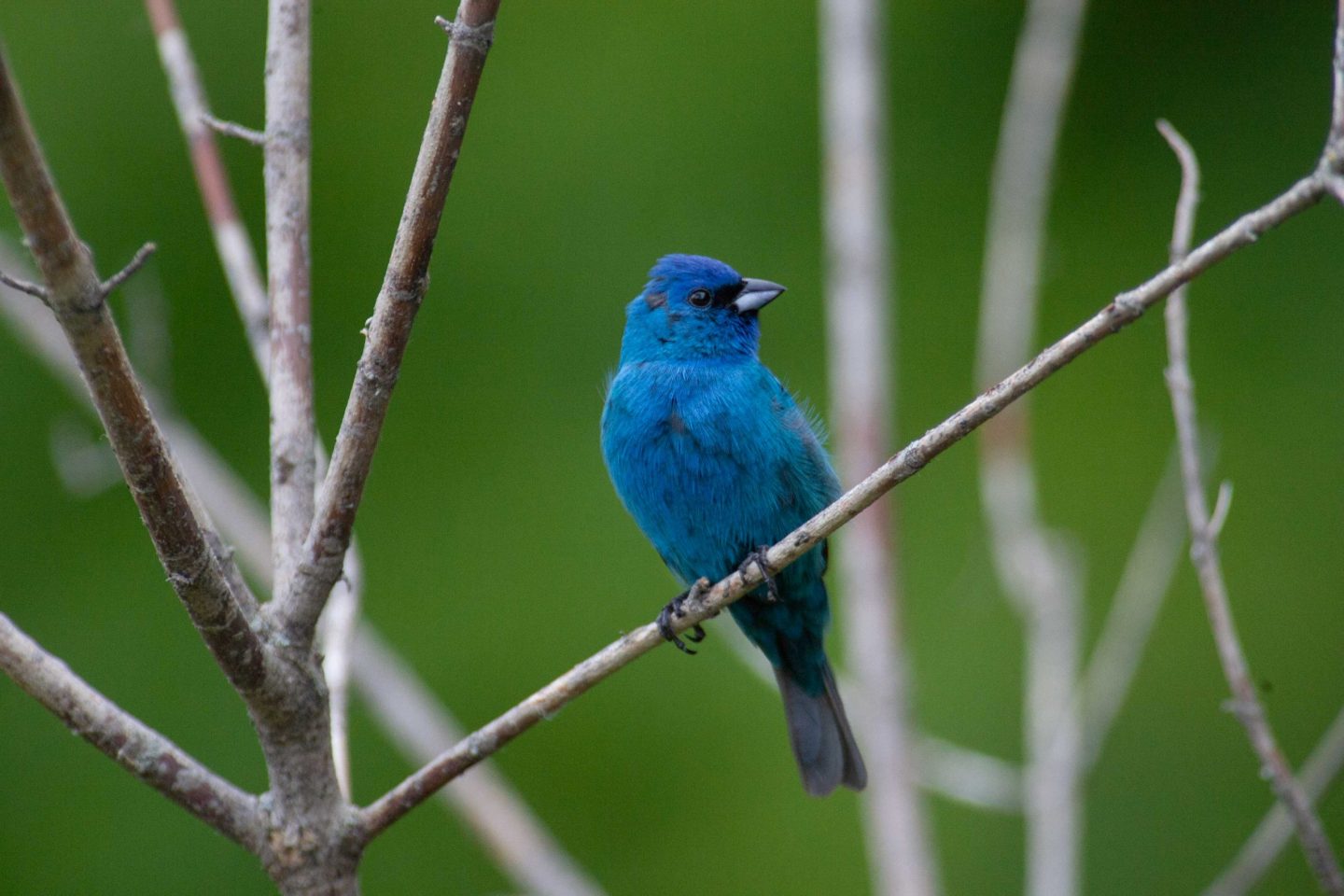
By Monica Macoubrie, Wildlife Education Specialist
Have you ever stopped to wonder why some animals are the colors they are? In nature, color is rarely just for looks, and nature never does anything by accident. Coloration is a tool, a messaging system and sometimes, it’s a clever disguise.
Across Nebraska’s prairies, wetlands, forests and streams, animals wear their colors like survival gear — and each color tells a story.
Vibrant Greens
All around Nebraska, you’ll find green popping up on insects, reptiles, amphibians and even some birds. It’s a color that blends beautifully into our landscapes, perfect for hiding from predators, sneaking up on prey, or sometimes just standing out to say, “Hey, I’m toxic — don’t eat me.”
Take the katydid, for example. These leaf-mimicking insects are one of the best examples of natural camouflage. Their green coloration doesn’t come from pigment alone. It’s actually a combination of yellow pigments and blue structural coloration. Their bodies are built in such a way that they reflect light in the green spectrum, making them nearly invisible among grass and foliage. Evolution has turned them into little plant imposters.
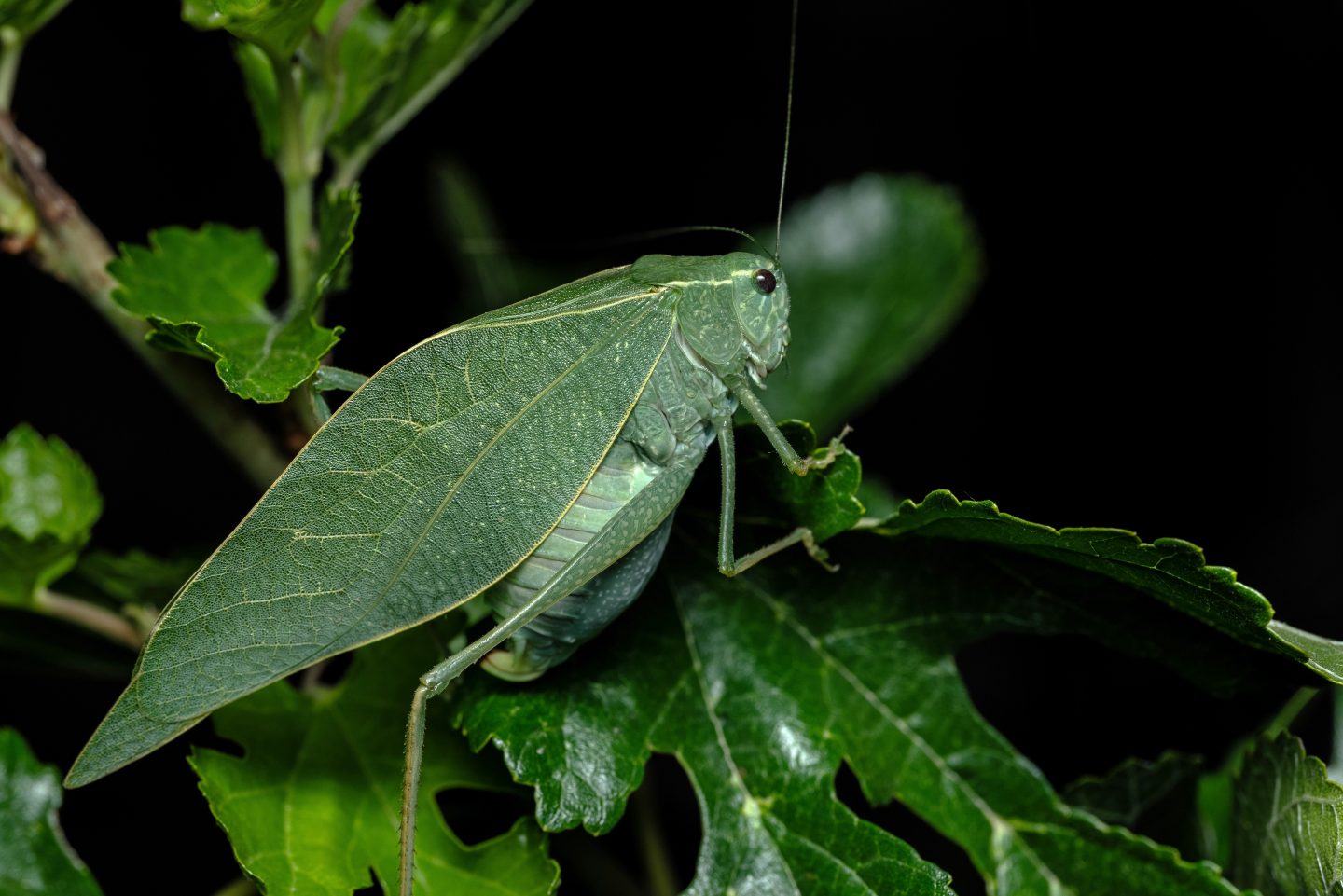
Then there’s the American bullfrog, a widespread amphibian found throughout Nebraska’s ponds, lakes and slow-moving streams. While not as boldly patterned as some frogs, bullfrogs often display a green or greenish-brown coloration that helps them blend into the surrounding vegetation and murky water. This camouflage is thanks to specialized skin cells called chromatophores, which layer pigments to produce their earthy tones. The upper layer reflects blue light, and when combined with yellow pigments underneath, gives the bullfrog its characteristic green appearance. It’s an ideal adaptation for staying hidden from predators, such as herons, raccoons or larger snakes.
But here’s the strange thing — there are no green mammals. None. Sure, some animals like sloths look green because of algae and moss growing in their fur, but that’s more of a superficial coloration than natural pigmentation present in their fur. Scientists believe it comes down to the way mammalian hair is structured and how pigments like melanin work. Unlike feathers or scales, fur just can’t pull off a true green hue.
Brilliant Blues
Blue may be rare in nature, but when it shows up in Nebraska’s wildlife, it dazzles — often thanks to clever tricks of light rather than pigment.
For example, the electric blue of a male indigo bunting underneath the summer sun would make anyone pause. But here’s the wild part: indigo buntings aren’t blue. Their feathers don’t contain blue pigment at all. Instead, their coloration comes from microscopic structures in their feathers that bend and scatter light — called structural coloration. It’s kind of like how bubbles or oil slicks can shimmer with rainbow colors depending on how the light hits them. Underneath, those feathers are actually black or brown.
Even bluegill sunfish — a common freshwater fish in Nebraska lakes and ponds—show off flashes of iridescent blue, especially during spawning season. Males develop a striking blue sheen along the gill covers and cheeks, along with a deep orange belly, to signal dominance and attract mates. In the water, that shimmer isn’t just beautiful, it’s a status update, a territorial warning and a love song, all rolled into one.
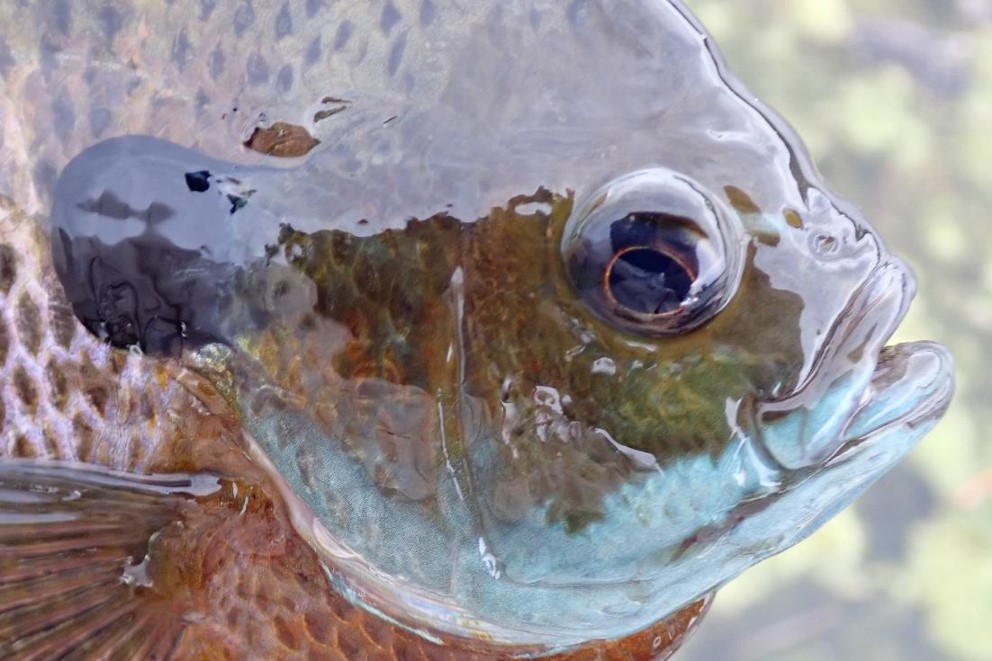
And then there’s one of my favorite unexpected flashes of blue in Nebraska — the blue mud dauber — a wasp. These solitary wasps are harmless to humans — they rarely sting — and they happen to be stunning little insects. Their bodies shimmer with a metallic blue or blue-black sheen. You’ll often see them hovering near porches, sheds or barns, searching for spiders to paralyze and stash in their mud-built nests.
This brilliant blue comes from, you guessed it, structural coloration. Just like birds and butterflies, their shiny appearance is due to the way their exoskeleton is built. It reflects and refracts light to produce that vivid, iridescent color. There’s no blue pigment involved at all.
Bold Yellow
When you think of yellow in nature, you probably picture sunshine, flowers or maybe buzzing bees. Yellow in animals usually comes from carotenoids — pigments they get from their diet. Birds like the meadowlark and goldfinch wear yellow thanks to these plant-based pigments. In insects and amphibians, yellow can also come from pteridines, or pigments made in their bodies.
But yellow can also be the perfect disguise, especially if you’re a predator waiting to surprise your dinner. Enter the goldenrod crab spider, a master of camouflage that uses bright yellow to vanish in plain sight. These little spiders are named for their ability to walk sideways like a crab, but it’s their color-changing ability that makes them stand out — or disappear.
Goldenrod crab spiders can shift between white and bright yellow, depending on the color of the flower they’re hiding on — usually goldenrod, black-eyed Susans or sunflowers. That yellow isn’t just for show — it’s for stealth. While a bumble bee or butterfly sips nectar, the spider lies in wait, its yellow body blending seamlessly into the petals until — snap! — it grabs its prey with lightning-fast front legs.
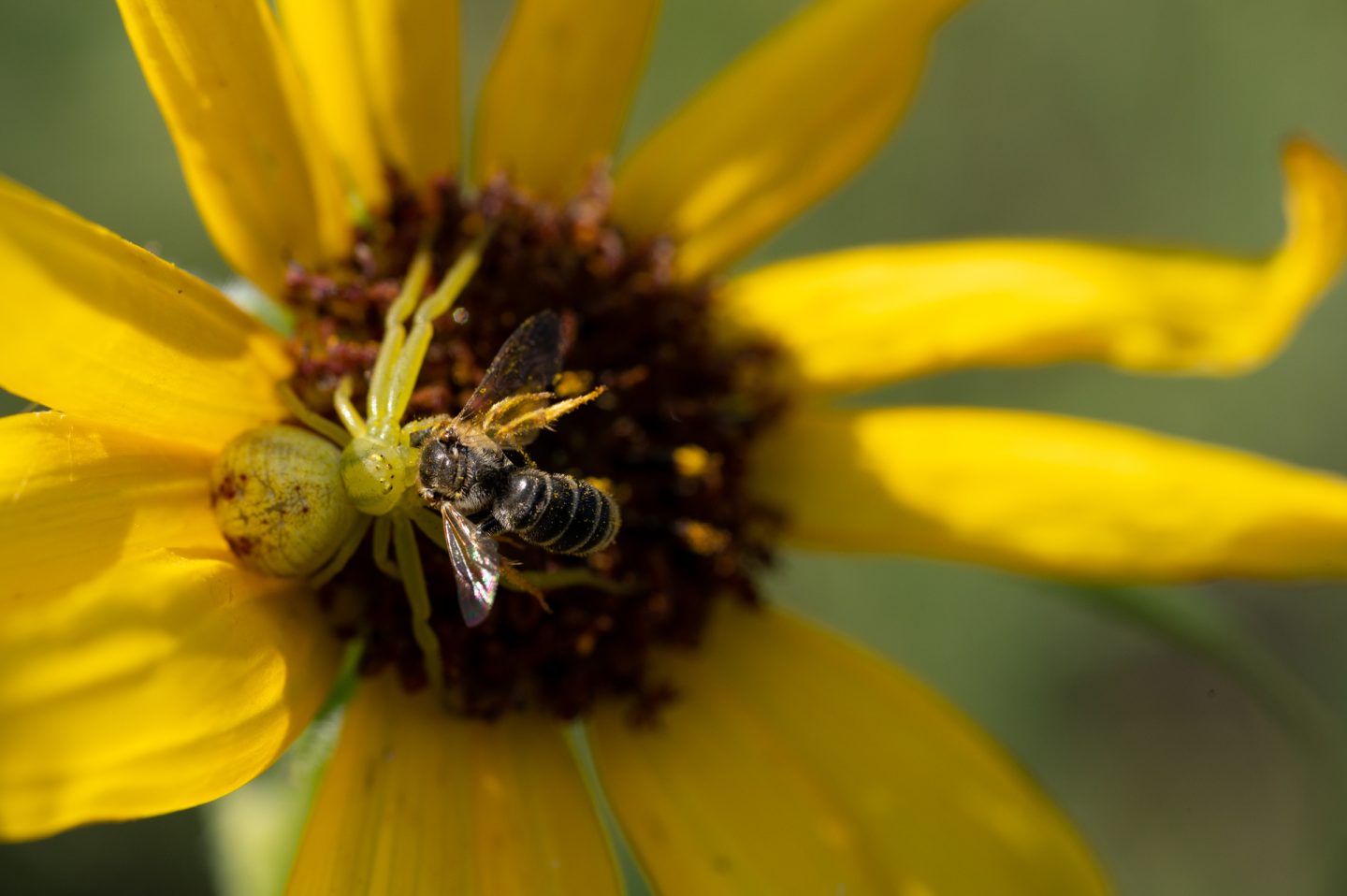
And who could forget the western meadowlark, Nebraska’s state bird? With its bright yellow chest and bold black “V” necklace, the meadowlark stands out among the tall grasses where it nests and sings. Unlike camouflage or warning, this yellow is all about visibility, especially during the breeding season when males belt out their flute-like song from fence posts or shrubs. In the bird world, that bold coloring says, “This is my territory!” and also helps to attract a mate.
Radiant Red
Red is one of those colors that instantly catches your eye — and in the wild, it rarely shows up by accident. Whether it’s a flash of warning, a signal to attract a mate or a clever form of camouflage, red is a powerful color that Nebraska’s wildlife uses in some fascinating ways.
Red coloration usually comes from pigments — compounds that absorb some wavelengths of light and reflect others. One of the most common is carotenoids, the same pigments that make carrots orange. Animals can’t make carotenoids on their own, so they get them from their diet. That’s why birds, such as cardinals or house finches, with richer red tones are often healthier and better-fed. That brilliant red is a signal of health and vitality — only the strongest males can maintain such vivid coloring, which helps them attract mates and defend territory.
Insects and reptiles might use other pigments like pteridines or ommochromes, which naturally produce red, orange or yellow hues. Unlike blue, which is often a trick of the light, red is usually true pigment — color built right into the body.
Take the common milkweed beetle, for example. These bright red beetles with black spots are a striking sight on milkweed plants during the summer. Their vivid coloration isn’t just for decoration — it’s a classic example of aposematic, or warning, coloration. Milkweed beetles feed on toxic milkweed, and their bodies store those chemicals, making them taste bad to predators. That red color screams, “Don’t eat me!” to birds and other hungry animals, who quickly learn to avoid them.
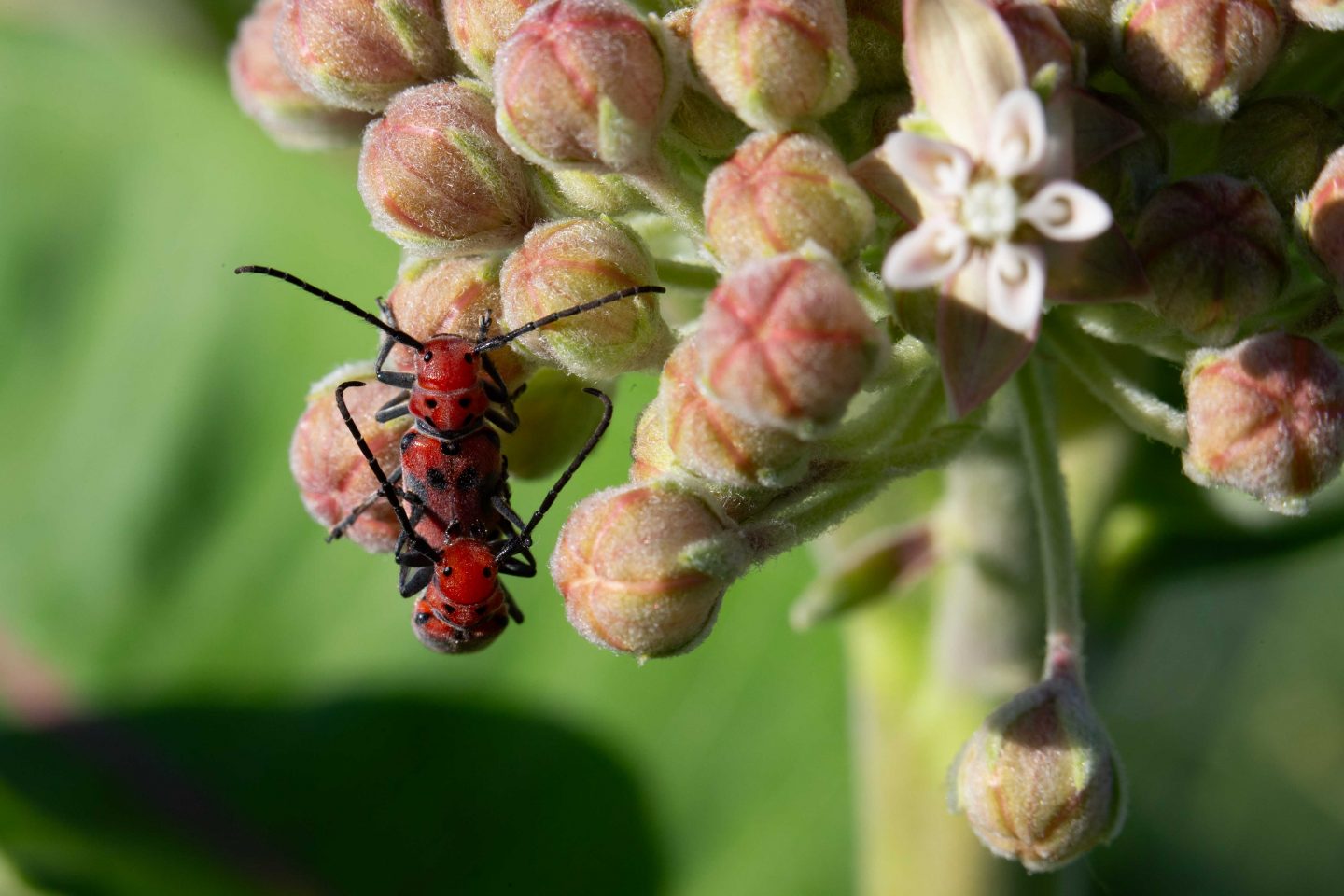
And we can’t forget the milk snake, one of Nebraska’s most striking reptiles. With its bold bands of red, black and cream or yellow, the milk snake is a true showstopper. This pattern is a classic case of Batesian mimicry, where a harmless species imitates a more dangerous one. In this case, the milk snake’s red and black bands resemble those of the venomous coral snake, which doesn’t live in Nebraska but is well-known in other parts of the country.
Earthy Browns and Tans
Not every animal needs to stand out. In fact, for many Nebraska creatures, blending in is the name of the game — and that’s where earthy browns and tans come in. These colors are the unsung heroes of survival, helping animals disappear into the grasses, soil, bark, and leaf litter that make up their homes.
Brown in animals usually comes from melanin, the same pigment that gives human skin and hair their color. Melanin is super versatile. Depending on the type and concentration, it can produce shades from light tan to deep black. Most mammals, birds and reptiles rely on melanin for their browns, which is why it’s one of the most common colors in nature.
Take the iconic white-tailed deer. Their coats shift with the seasons — from a rich reddish-brown in summer to a grayer, duller tan in winter — perfectly matching the changing colors of the landscape. This seasonal camouflage helps them hide from predators, such as coyotes or mountain lions, and sneak through dense woods or open fields without being noticed. Even their young fawns come covered in spots that mimic dappled sunlight filtering through the trees — a perfect natural disguise for staying hidden while mom forages.
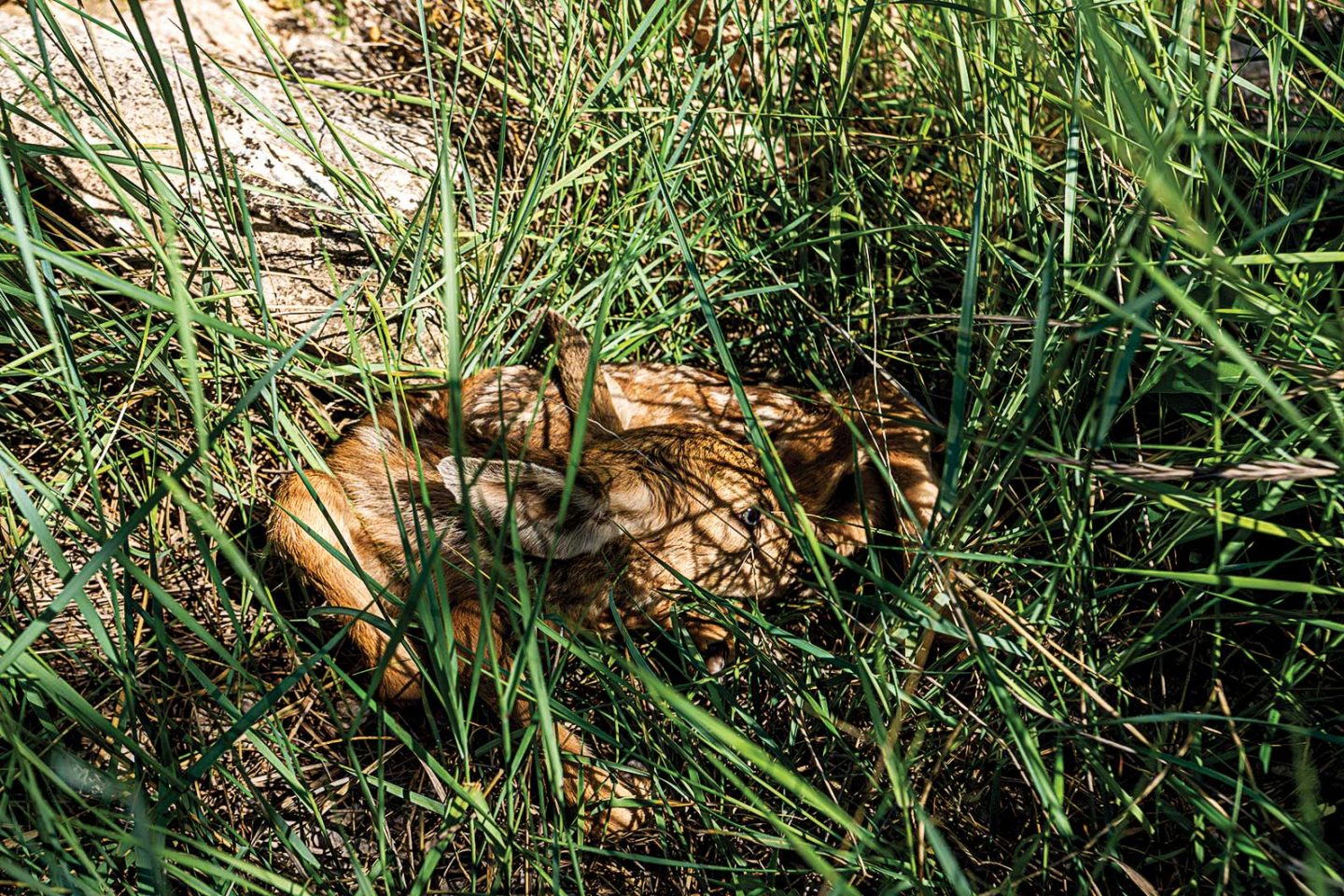
Then there’s the eastern cottontail rabbit, whose mottled brown and tan fur blends effortlessly with prairie grasses and fallen leaves. Their coloration helps them stay undetected from hawks overhead and foxes on the ground. When danger approaches, these rabbits rely on their camouflage and lightning-fast speed to escape.
Even our birds use these muted colors to stay safe. The mourning dove sports soft browns and tans that let it fade into fields and open woodlands. When it’s perched or nesting on the ground, those subtle earth tones reduce its visibility to predators.
So, Why Does it Matter?
Color in the animal world is never just for show. Whether it’s a warning, a disguise, to attract a mate or a trick of light, each hue has a purpose. As we hike through grasslands, wade through wetlands or sit quietly in our backyards, taking time to notice these color clues gives us a deeper appreciation for how perfectly tuned Nebraska’s wildlife is to the world around them.
